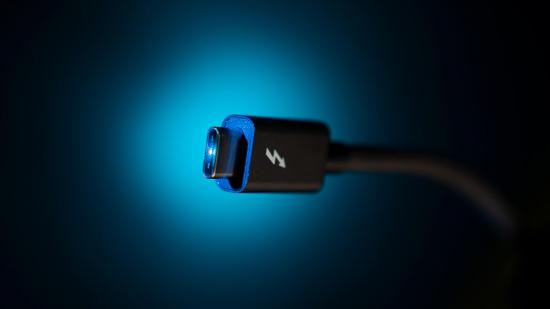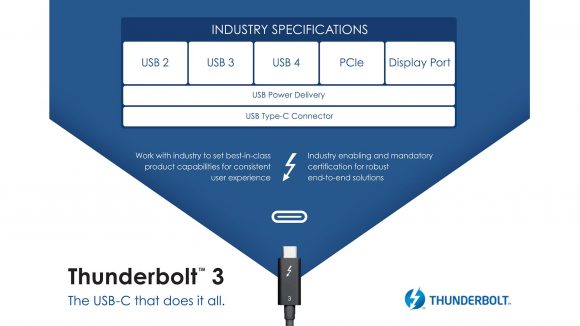The next-generation of USB standard has been announced. Built upon the newly royalty-free Thunderbolt protocol from Intel, USB4 will double USB 3.2’s transfer speeds for a whopping 40Gbps, enable multiple simultaneous data and display protocols, and will adopt the USB Type-C specification.
The full specification is currently in review by over 50 companies, including Intel, Apple, Microsoft, and Texas Instruments. It should be finalised by the middle of 2019, alongside a new and improved USB Type-C spec, with mainstream adoption likely sometime in 2020 as manufacturers start making the move. Here’s hoping the USB Promoter Group keeps the naming simple this time, too. For the record it’s USB4 – just like that.
“The primary goal of USB is to deliver the best user experience combining data, display and power delivery over a user-friendly and robust cable and connector solution,” Brad Saunders, USB Promoter Group chairman, says. “The USB4 solution specifically tailors bus operation to further enhance this experience by optimizing the blend of data and display over a single connection and enabling the further doubling of performance.”
The Thunderbolt protocol has long been the sole domain of Intel, its originators. Thunderbolt 3 incorporates eight lanes of DisplayPort 1.2 for dual 4K 60Hz displays, a USB 3.1 controller, four lanes of PCIe 3.0, peer-to-peer connectivity, and up to 100W charging from a single USB Type-C connector. The only problem being Intel owns the tech and Apple is for the most part your best bet for platform support.
Upgrade: These are the best CPUs for gaming
However, earlier this year Intel announced it would allow the industry to adopt the standard with a nonexclusive, royalty-free license, in hopes adoption rates would skyrocket as a result.
Intel similarly announced it would incorporate Thunderbolt 3 directly into its future CPUs, further widening the potential user base for its transfer protocol. The first processors to be built with Thunderbolt 3 will be 10nm Intel Ice Lake chips expected by the end of the year.
USB4 will be backwards compatible with USB 3.2 (the latest USB release), USB 2.0, and Thunderbolt 3.
One of the upsides for gamers is that support for external graphics cards will be far more widespread with the release of USB4.
“Releasing the Thunderbolt protocol specification is a significant milestone for making today’s simplest and most versatile port available to everyone”, Jason Zilla, GM Client Connectivity Division at Intel, says. “This, in combination with the integration of Thunderbolt 3 into upcoming Intel processors, is a win-win for the industry and consumers.”

